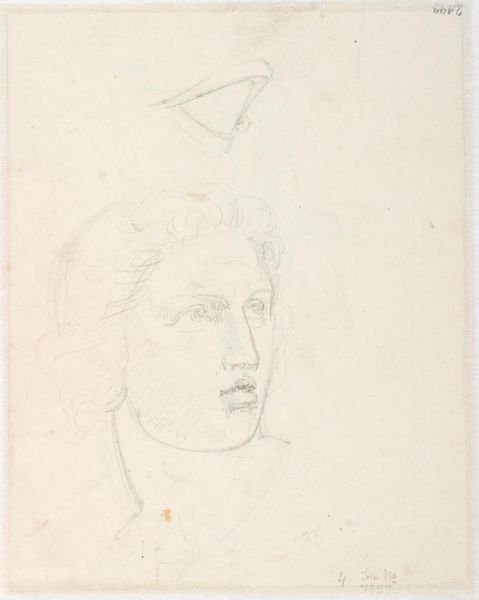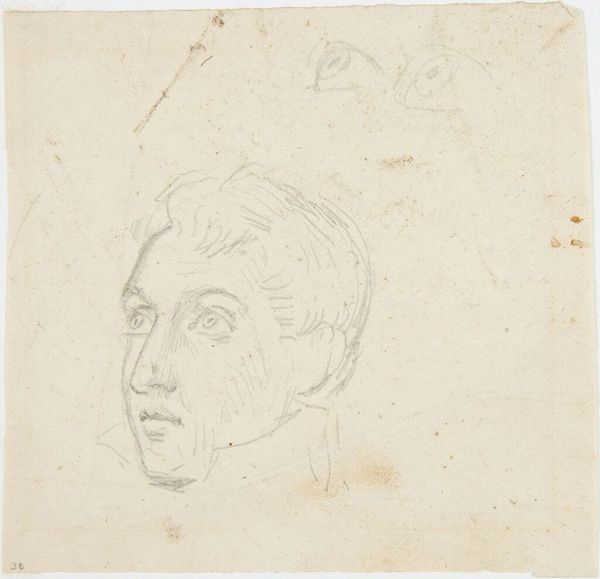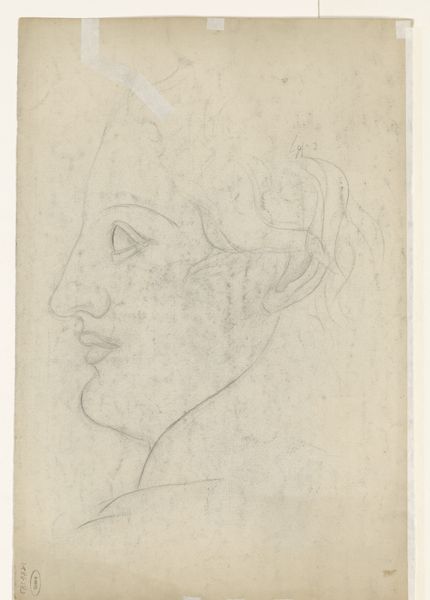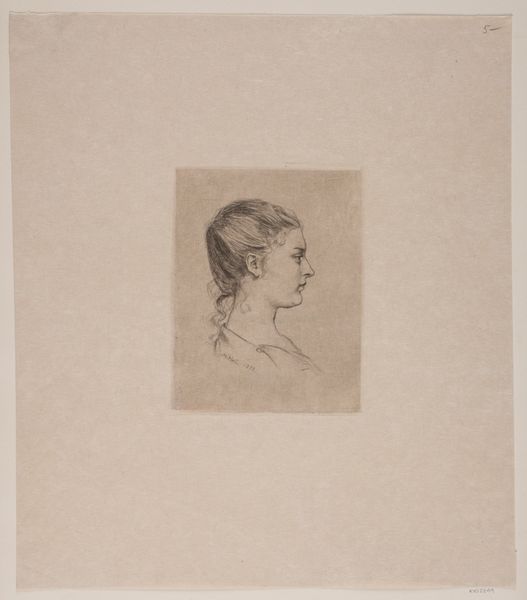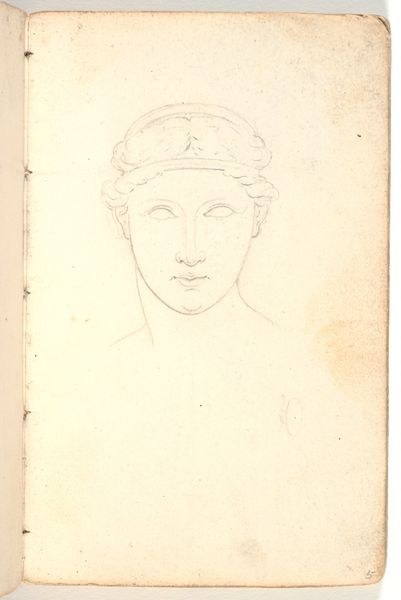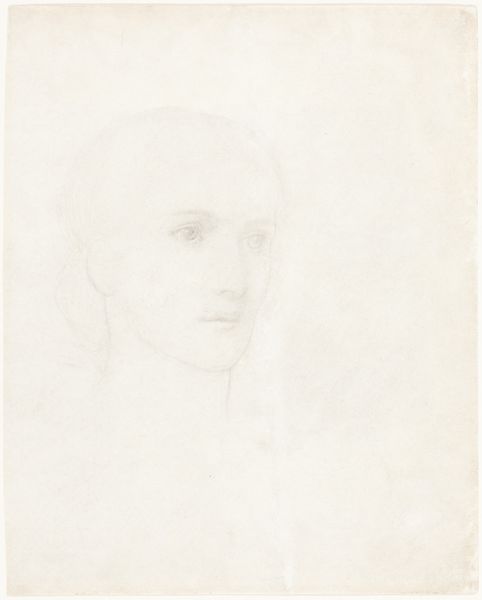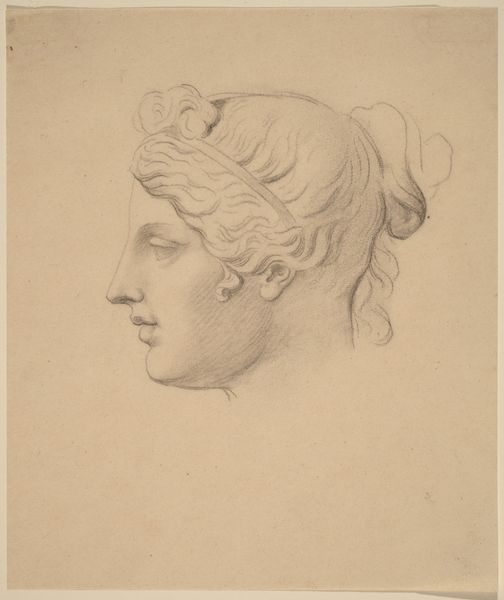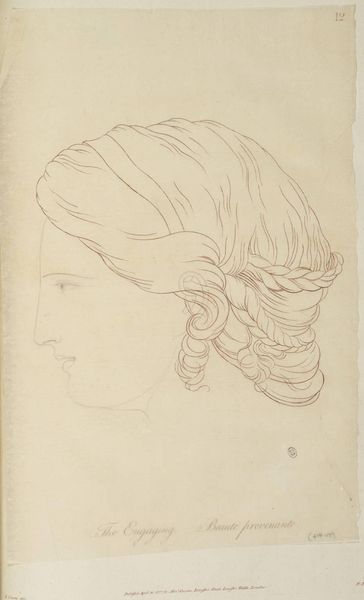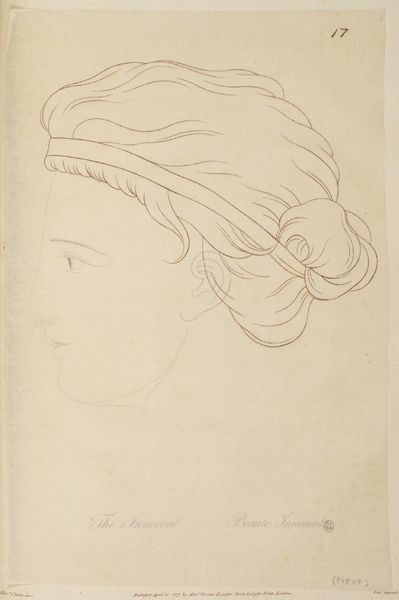
drawing, pencil
#
portrait
#
pencil drawn
#
drawing
#
neoclassicism
#
pencil drawing
#
pencil
#
portrait drawing
#
academic-art
Dimensions: 233 mm (height) x 218 mm (width) (bladmaal)
Curator: Here we have Dankvart Dreyer's "Tegning efter gips, et kvindehoved med diadem," created in the 1830s. It's a pencil drawing held here at the SMK, the National Gallery of Denmark. Editor: Immediately, there’s something ethereal about this portrait. It feels more like a whispered memory than a concrete image. The delicate lines almost dissolve into the paper itself, creating a sense of transience. Curator: Precisely. The medium, pencil on paper, allows for a subtlety that captures the essence of the neoclassical style. Notice the emphasis on line and form, striving for an idealized beauty, reminiscent of ancient Greek sculpture. The tight modeling accentuates contour and shape and serves as evidence of Dreyer's academic training. Editor: She has an otherworldly serenity; I keep expecting her to vanish into thin air. There’s a beautiful tension between her tangible features—the curve of her nose, the set of her jaw—and the ephemeral nature of the drawing itself. Curator: Yes, this tension is central to the work’s impact. Dreyer masterfully employs sfumato, blurring the edges to soften the features. He doesn’t want her to exist too rigidly; instead, this encourages a quiet contemplation. We see evidence that this is, in fact, "after plaster," or rather, "after the antique" due to the limited development in tonal value, resulting in the work's ultimately planar appearance. Editor: There’s also something intensely personal about it, even though it’s a copy. I imagine the artist, bent over his work, painstakingly trying to capture the beauty of the original, somehow imbuing it with his own soul in the process. Curator: Undoubtedly. It's an exercise, a demonstration of skill. It also resonates within a larger academic context—copying from existing work became the standard for the period in relation to artistic development. We can easily imagine Dreyer in this setting, eager to learn and ultimately perfect his craft through practice. Editor: Well, he has, at least in my opinion, left us with something beautiful. This brief encounter with a timeless face has sparked any number of memories within me! Curator: Agreed. It invites the viewer to partake in a dialogue with history itself.
Comments
No comments
Be the first to comment and join the conversation on the ultimate creative platform.
